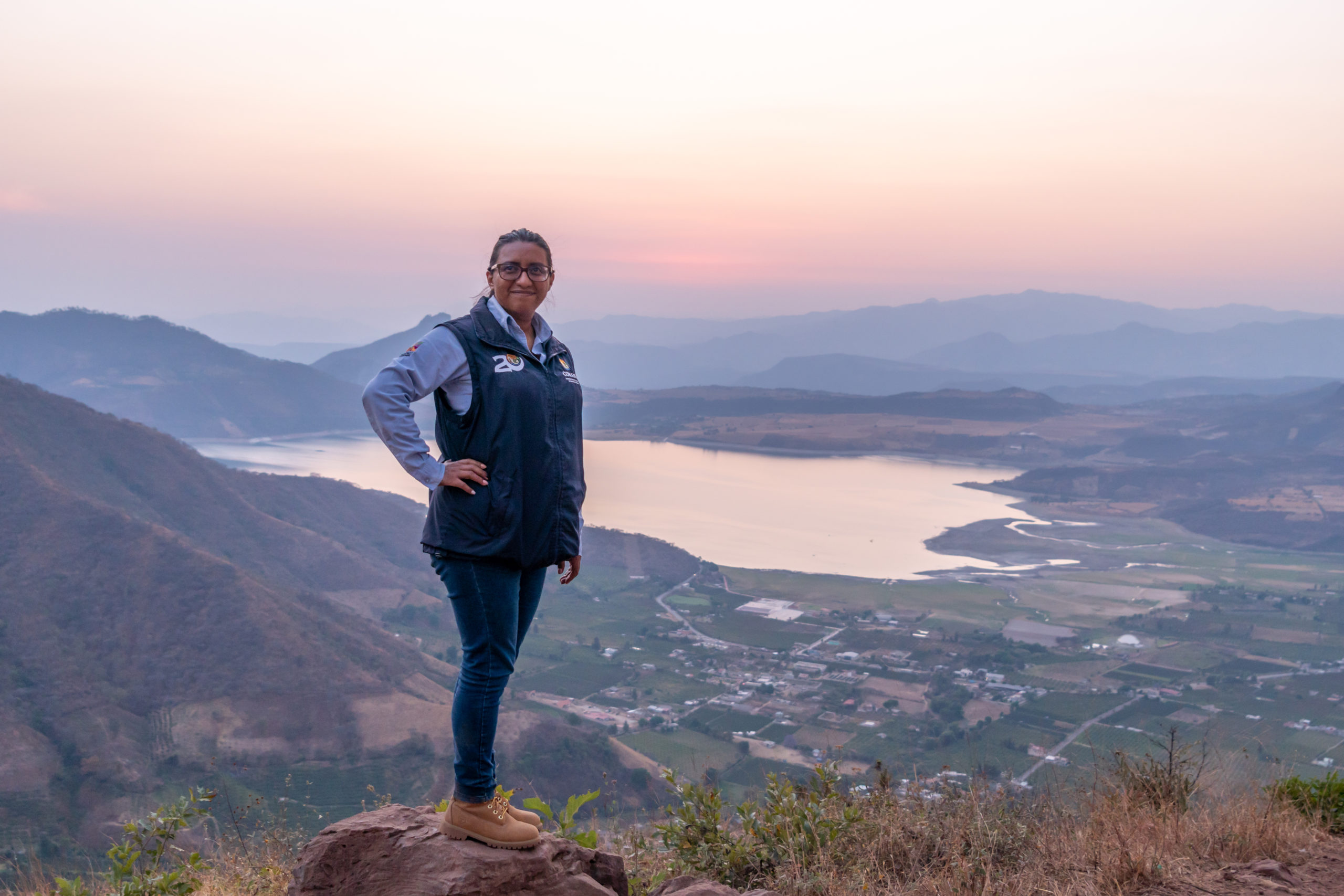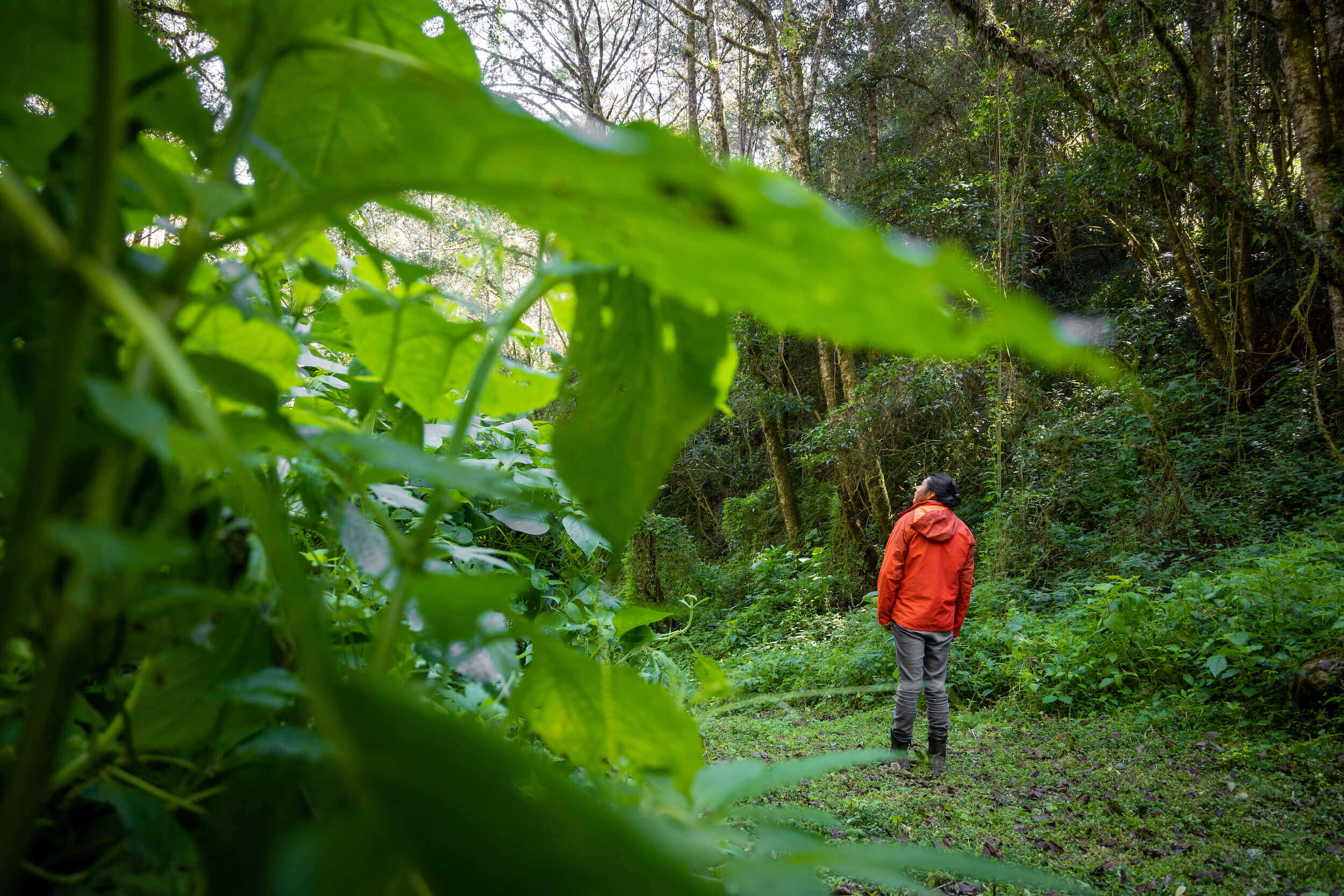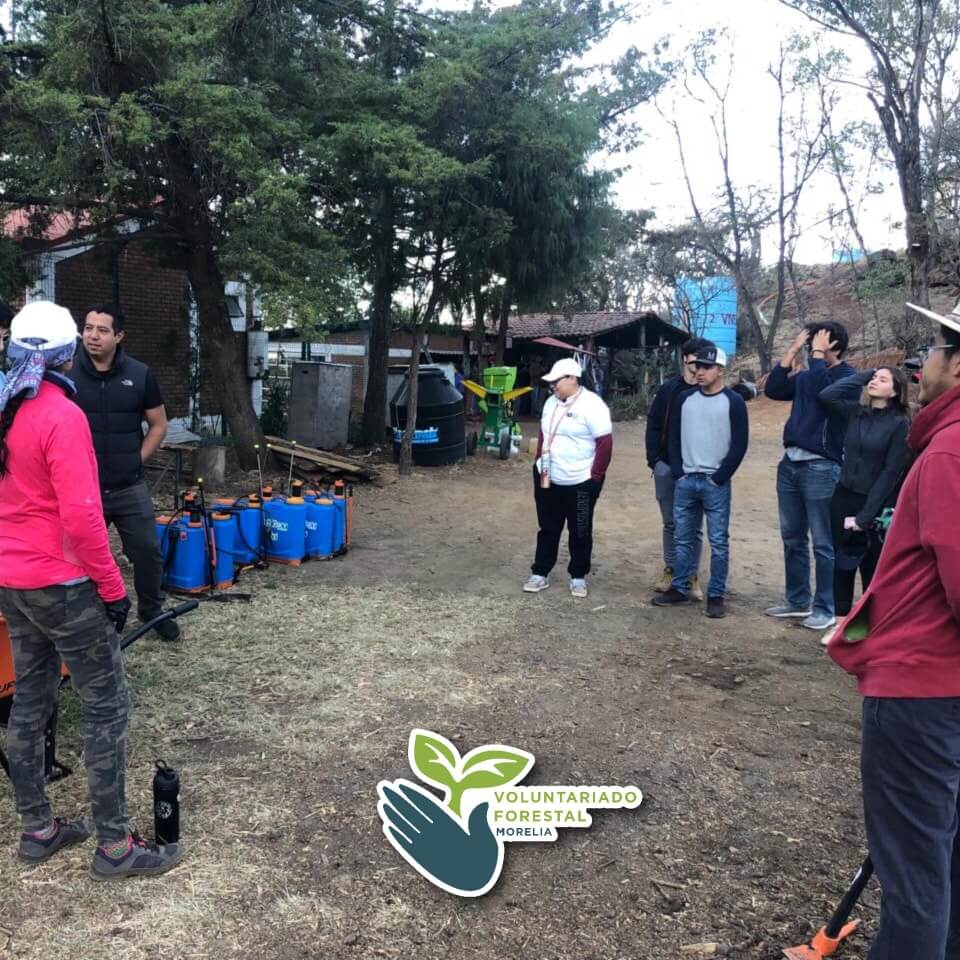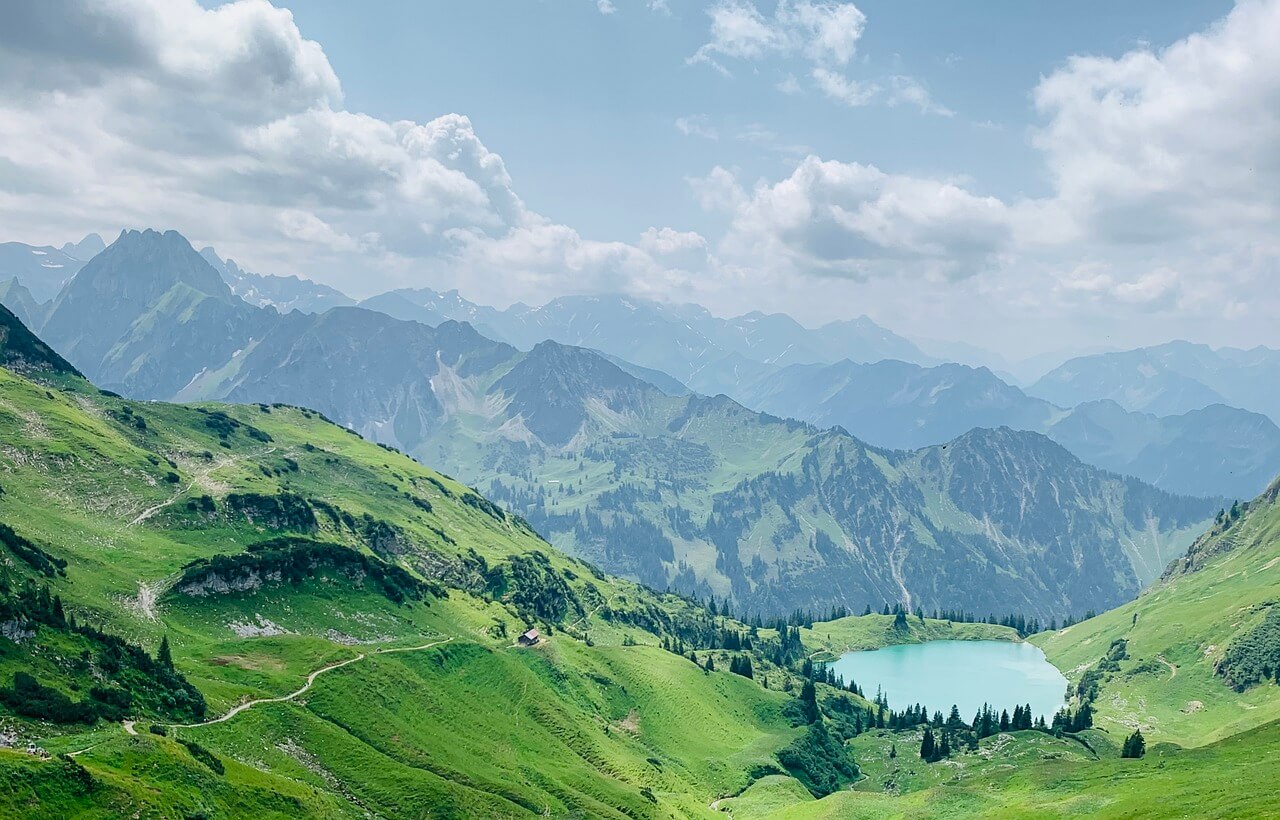Tere in Lechuguillas

Michoacán: much more than the monarch butterfly. Tere in Lechuguillas
The state of Michoacán, famous for hosting the Monarch Butterfly Sanctuary Biosphere Reserve, currently a World Heritage Site by UNESCO in 2008, and famous throughout the world, has numerous volcanoes that are part of the Transverse Neovolcanic Axis. Within this Natural Protected Area (NPA), not so far from the city of Zitácuaro, we find the Lechuguillas Ecotourism Park where Tere, the founder, tells us that the Center covers an area of two hectares of pure forest of oyamel, pine, oak and cedar, where there are also water springs.
Unfortunately, I have not yet been lucky enough to visit the Center in person, but I was able to talk with Tere and hear her story about her life, this beautiful place and the project she has been leading for the last 10 years. Tere's passion for the forest was born when, as a little girl, she would go with her dad to explore it. She tells us how she listens to the wind, the rustling of the trees when they collide and even the fluttering of the monarch butterflies. Tere decided to study community development after starting medicine, because "it is a way to help people and contribute, because not everything is industry, not everything is the city" and I can only agree with her, this project seems to me the concrete proof of the incredible benefits that collaboration and community development can bring to a community; but let's see how she did it.

The idea for the park was born as a solution to the major problem of clandestine activities, such as logging, which greatly affect the biodiversity of the area. The area was little frequented and these types of activities were easy to carry out, but with this project they began to teach local people to enjoy nature without damaging it. They built with eco-techniques, such as dry toilets and energy-saving stoves, and managed to stop illegal logging - almost completely, it is an incredible achievement and their pride could be heard in their words. The park now offers various activities such as hiking, gastronomic experiences, zip lines and hanging bridges, but Tere tells us that it was not always easy to attract tourists.
"At first it was difficult because we had the place but we didn't have the people, we didn't know how to attract them. They come in butterfly season, but they would come just to see the butterfly and leave."
The idea was born to create itineraries and routes to complement the visits to the sanctuaries, creating a network of collaboration instead of competition. He began to collaborate with a tour operator that made contacts with tourism agencies, and through them he was able to participate in various tourism tianguis to bring local handicrafts and promote itineraries and activities.

"Obviously it wasn't all easy," Tere tells us. At the beginning there were many challenges because the ejidatarios, mainly men, did not trust a woman's abilities, but with patience and time she was able to gain their trust. Now she tells us that it is easier to work with them. Tere invited all women "to train themselves and to do things with love and affection, because that is what gets us ahead" and that, I would add, makes us unique and strong. She described the women of her community as women "with a lot of enthusiasm, hard-working, trustworthy, educated" and, once again, her words through her eyes, transmitted all the pride of being part of this community and this land.




Previous
Next
There were also other cultural obstacles to the collaboration and realization of his project. She tells us that two very different ethnic groups live in the area: the Otomi and the Mazahua. These two ethnic groups share the same site but Tere tells us that there is a lot of jealousy, on the one hand the Otomi are at risk of disappearing and the Mazahua have many different traditions and dialects, and at the beginning it was very difficult to facilitate a collaboration. But finally this year Tere was able to get them to collaborate through the creation of several tourist routes aimed at promoting local traditions and handicrafts, such as traditional embroidery, Zitácuaro textiles made of sheep wool and ocoxal, or typical dishes such as corundas (a type of tamale), pulque and buñuelos with white atole. Now the women of the two ethnic groups are very motivated to continue working together.

Talking with Tere made me feel there, in her land, I could almost smell the forest and hear the wind through her stories. I hope all of you who read us will one day be lucky enough to meet Tere, and feel the warmth of her words and be infected by her perseverance.
"I invite you to come and visit us in Zitácuaro and Lechuguillas, you will have an unforgettable experience, you will forget your problems, see and smell the forest....
We invite you to come and get to know us, we only lack the beach, but we have dams".
Teresa Carapia Hernández







